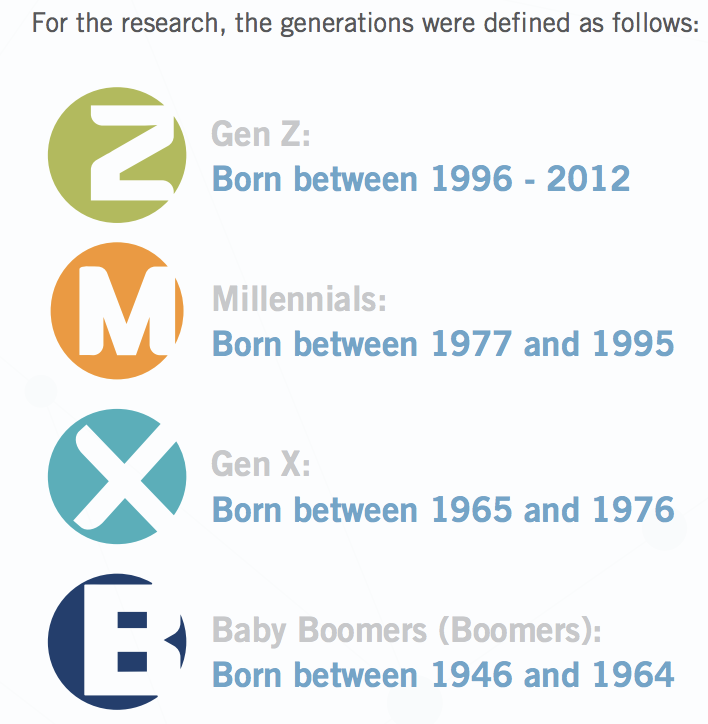New research around the active generations engaging with local government produced surprising and actionable insight. The findings make it clear that local government’s approach to service cannot be one-size-fits-all. In fact, in a time when effectively reaching and engaging all community members is imperative for public health and continuity of government operations, understanding and meeting generational differences are critical.

In this blog space, we tackled the challenges around successfully reaching, serving, and engaging all the generations that make up full communities. We highlighted the research study’s findings around government’s responsibility and examined Gen Z’s unique significance, as well as the role of social media and the very real difference between “serving” and “engaging.”
Much more, however, can be mined from the research. The following are additional statistics that tell important stories and help local leaders respond to generational differences.
No Thumbs up From Boomers
Baby boomers tend to vote more than anyone else. They also tend to hold senior leadership roles, serve on boards and control access to capital. Yet 24% of boomers say they have never had a positive experience with local government. The fact that nearly a quarter of the generation that has been interacting with local government for more than 40 years has never had a positive experience is quite something.

Rather than baby boomers being a lost cause for local leaders, the statistic raises the bar and presents a significant opportunity. Perhaps what we’ve always done is no longer working for boomers. It’s worth considering that boomers could thrive and be more satisfied with increased incentive or motivation to try something new. The good news is that now is the perfect opportunity to use innovations that are accelerating due to COVID-19 to make it easier for boomers to engage with local government.
Ready to Hire?
Agencies looking to hire should consider Gen X and millennials. In a surprising statistic, 41% of Gen X and millennials find working in local government at least somewhat appealing. According to the study, better pay and the opportunity to affect real change are the top drivers for people receptive to local government work. The opportunity to affect real change ranked even higher in importance than flexible hours, another unexpected survey result.
Local governments that know who to target and what makes municipal employment attractive may see better recruiting and retention results.
Boomers and Gen Z: Kindred Spirits
An expectation going into the research was that all four surveyed generations would behave and think differently. The results showed a different story. In many areas, Gen X and millennials responded one way, and either Gen Z or boomers (or both) were the outliers.
“Gen Z was shockingly similar to boomers,” noted Jason Dorsey, President at the Center for Generational Kinetics. “Gen Z certainly seems to think different about things like stability, trust, loyalty, and engagement, and that’s really powerful because the boomers in our other research have exhibited the same characteristics.” This study lends support to the notion that Gen Z is, in many ways, a “throwback generation.”
An illustration of this comes in feelings around government’s areas of responsibility. Boomers felt that local governments bear the largest responsibility for managing community assets (73%) and improving connectivity and accessibility (53%). Gen Z also ranked managing community assets highest among local government responsibilities, at 57%. Gen Z similarly tracks with boomers on improving connectivity and accessibility, at 51%.
Boomers and Gen Z also rated local government much lower than did the other groups in attributes ranging from inclusivity, ability to get things done, transparency, responsiveness, representing your needs and wants, and ability to innovate, among others. The alignment is intriguing and presents an opportunity for local governments to improve constituent interaction and service with a broad-brush stroke in certain areas.
Gen X Satisfaction
Gen X rates local government high across the board – a true surprise for a generation that typically is hard to please and loathe to give high ratings. Eighty-four percent of Gen X respondents said their government serves them well, and 73% agreed that their government also engages them well.
Technology may have something to do with this, as Gen X, like boomers, preferred to get local government information from a website, at 59%. Rather than growing up with an expectation of immediate mobile access and easy digital processes, Gen X remembers a time of government engagement before technology. This makes advancements nice, but not expected for this group, which is one reason why local governments should not abandon more traditional channels of engagement when adopting new, mobile solutions.
Regardless of channel, 81% of Gen X said better technology would go a long way toward helping local government. This is a clear signal that local government engagement through tech isn’t just about reaching the younger cohorts, but about better capturing all diverse generations through their preferred methods of interaction.
These insights and the supporting research help local governments maximize service delivery, enhance public participation, and foster partnerships necessary to navigate today’s challenges and weather what comes next.
Meredith Trimble is a former municipal official and Town Council Acting Chair, who focused on strategic planning, annual budgeting and bonded infrastructure projects. Her government experience also includes posts in both federal and state-level executive branch agencies: Associate Editor of the U.S. Federal Election Commission’s FEC Record; and Director of Education for the Connecticut Office of State Ethics. Now a Senior Content Specialist with Tyler Technologies, Inc., she writes content to help empower those who serve the public. Her current focus is to help facilitate data-enabled organizations to create connections between governments and those they serve.





Leave a Reply
You must be logged in to post a comment.